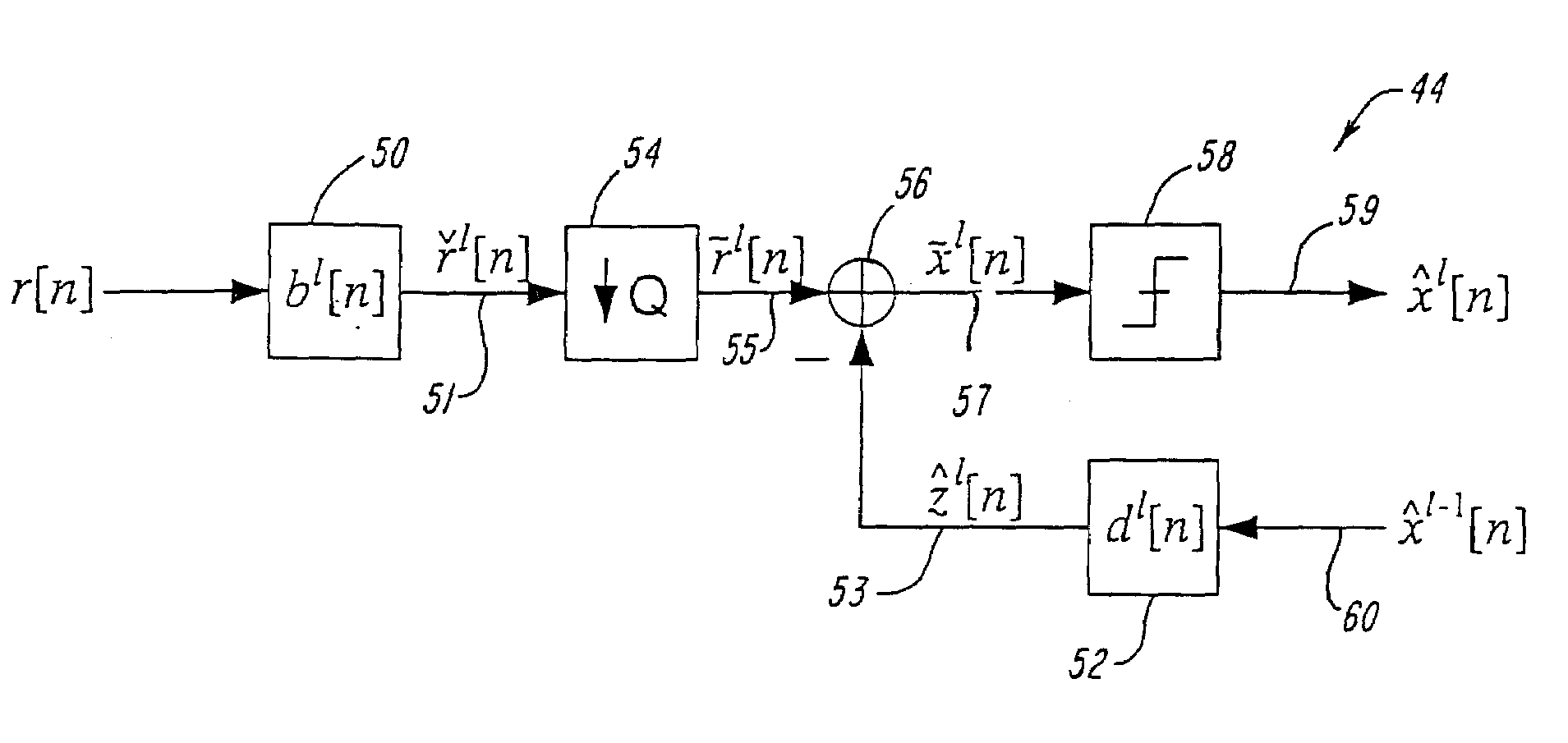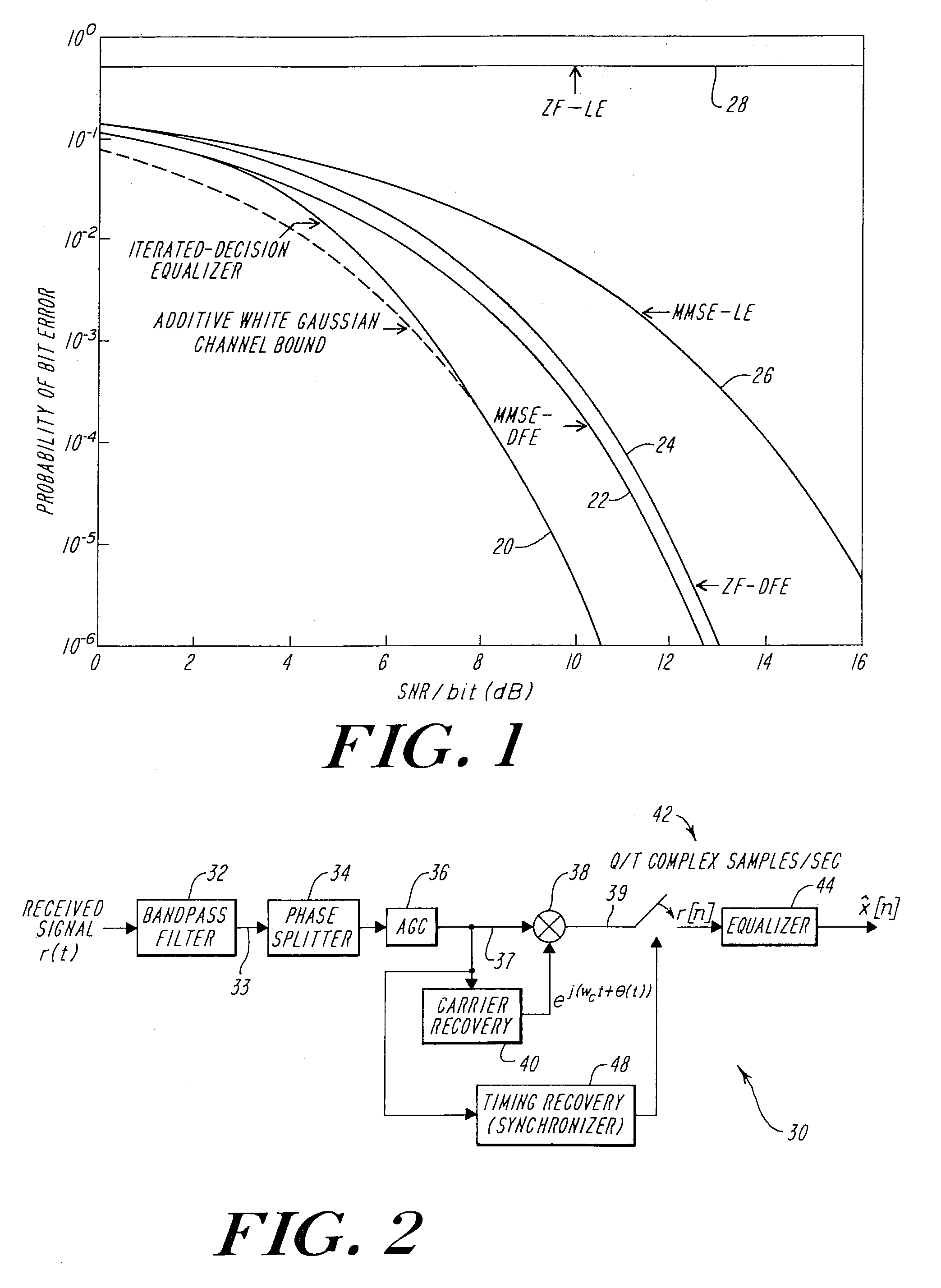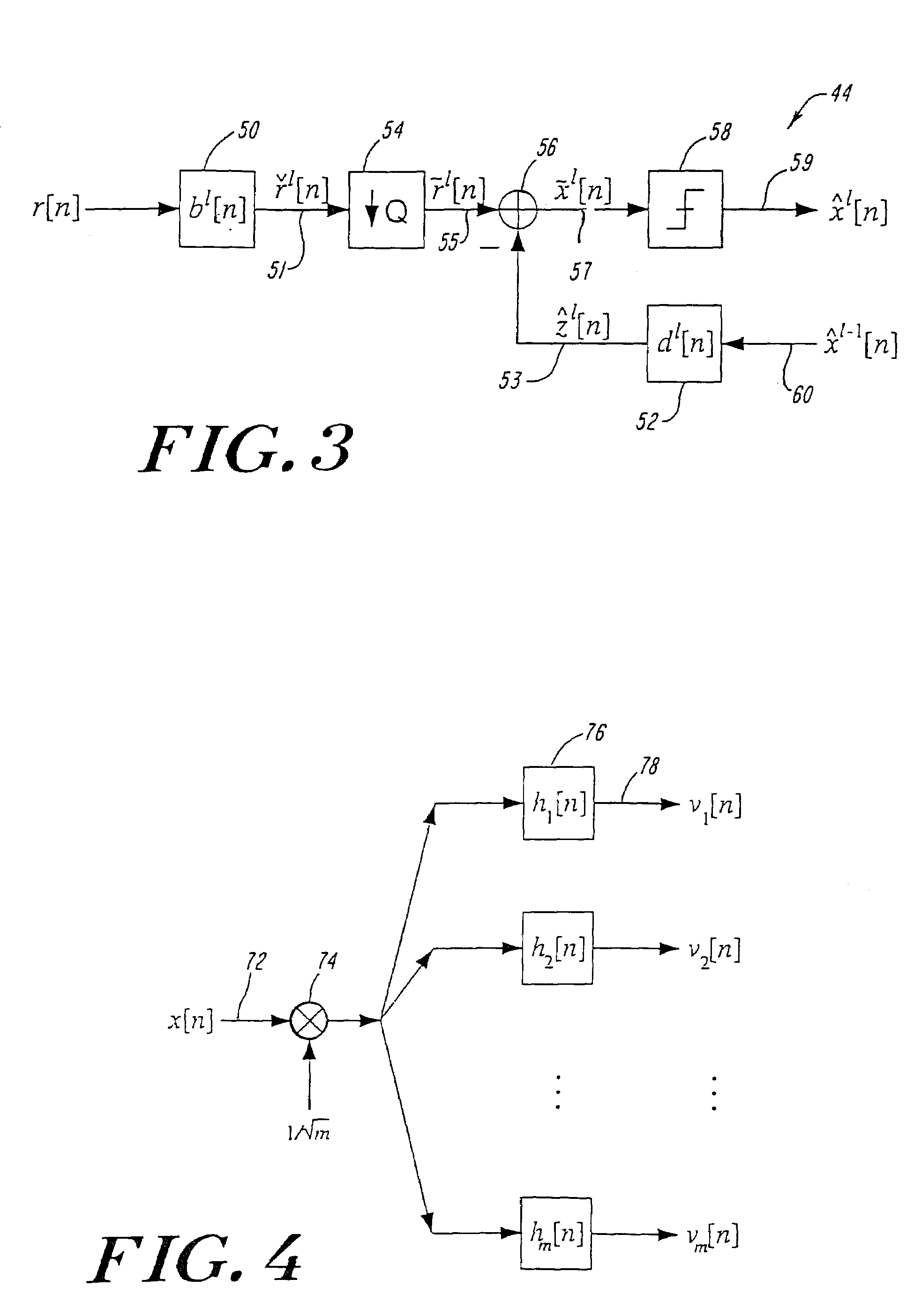Block-iterative equalizers for digital communication system
a digital communication system and equalizer technology, applied in the field of equalizers, can solve the problems of inter-chip interference, severe degradation of system performance, and distortion, and achieve the effects of enhancing system performance, less received signal power, and low computational complexity
- Summary
- Abstract
- Description
- Claims
- Application Information
AI Technical Summary
Benefits of technology
Problems solved by technology
Method used
Image
Examples
Embodiment Construction
[0029]The present invention is directed to a novel equalizer system suitable for use in modern communication systems. A block-iterative configuration is employed to efficiently process received data, in a manner that is reliable and computationally inexpensive.
[0030]During each iteration, a set of tentative decisions are made as to the transmitted data, with the help of tentative decisions from a previous iteration. Reliability of the tentative decisions improves during each iteration, and therefore the tentative decisions from the previous iterations become more useful. The iterations continue until further iterations do not significantly change the set of tentative decisions.
[0031]Unlike conventional DFEs, the novel equalizers of the present invention suppress virtually all of the ISI, including precursor and postcursor ISI, in a nonlinear manner, significantly enhancing system performance. In fact, theory and simulations have demonstrated that the new class of equalizers can achi...
PUM
 Login to View More
Login to View More Abstract
Description
Claims
Application Information
 Login to View More
Login to View More - R&D
- Intellectual Property
- Life Sciences
- Materials
- Tech Scout
- Unparalleled Data Quality
- Higher Quality Content
- 60% Fewer Hallucinations
Browse by: Latest US Patents, China's latest patents, Technical Efficacy Thesaurus, Application Domain, Technology Topic, Popular Technical Reports.
© 2025 PatSnap. All rights reserved.Legal|Privacy policy|Modern Slavery Act Transparency Statement|Sitemap|About US| Contact US: help@patsnap.com



